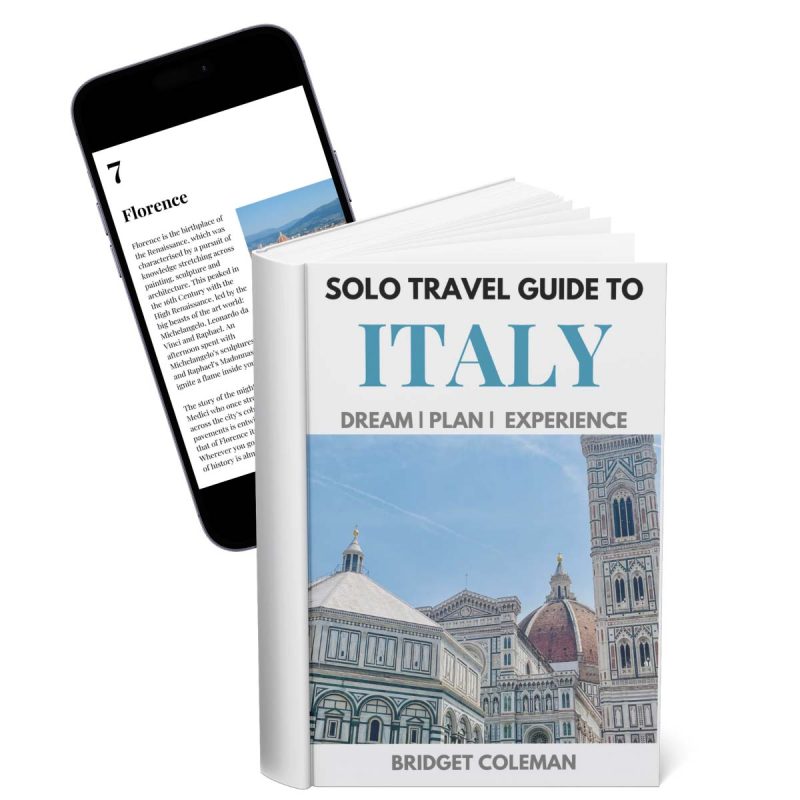Bologna has had several nicknames throughout its long history but three have stuck: La Rossa (The Red), La Grassa (The Fat) and La Dotta (The Learned). Let’s explore Bologna’s historic centre through these sobriquets which go to the very heart and soul of the city.

Some articles on this website contain affiliate links. This means that I may earn a small commission if you make a purchase through these links. As an Amazon Associate, I earn from qualifying purchases. Read the full disclosure here.
I’VE WRITTEN THIS ITALY SOLO TRAVEL GUIDE!
A 100+ page ebook to inspire and equip solo travellers with the confidence and knowledge to explore Italy independently
- Plan Your Trip – with curated itineraries, budgeting and how to get around
- Explore Awesome Destinations – guides to the must-see cities of Rome, Florence, Venice and Naples
- Stay Safe as a Solo Traveller – practical safety advice, empowering you to confidently navigate Italy and avoid common pitfalls
- Enjoy Eating Out in Italy – essential tried-and-tested solo dining tips
La Rossa (The Red)
La Rossa originally referred to the city’s appearance.
Since the times of the Etruscans, clay and sandstone have been used in Bologna’s buildings. If truth be told, the city’s colour palette runs from caramel to red with ochre and amber accents, but red is good enough.
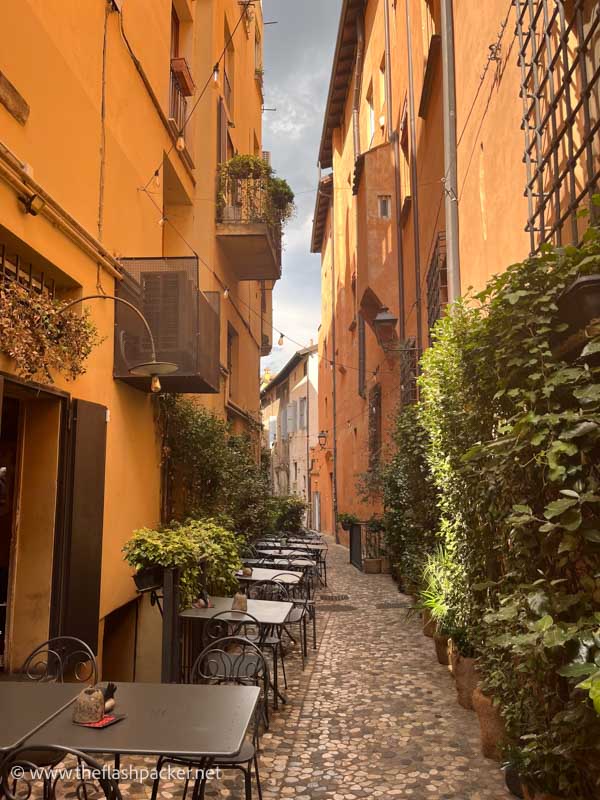
Bologna’s harmonious appearance is no accident. In the 1970s, it became an early champion of historical conservation, slapping a preservation order on buildings within the historic city walls. This extends to the russet red window shutters.
Piazza Maggiore is the city’s beating heart and home to some of Bologna’s most famous buildings.
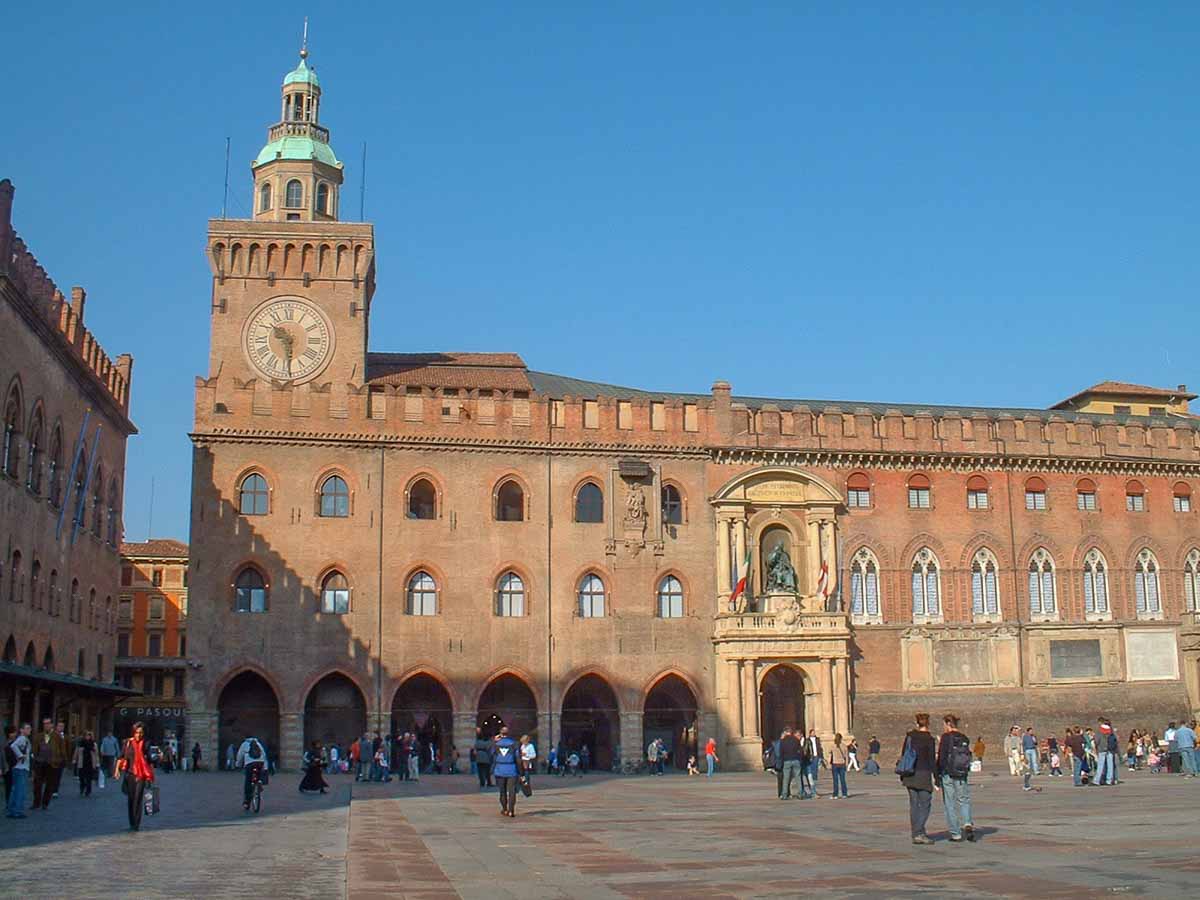
The crenellated Palazzo d’Accursio (or Communale) has been the nerve centre for local politics since 1336. Visit the viewing terrace that wraps itself around its 15th-century Accursi Tower (Torre Accursi) for an unbeatable view of Bologna’s red rooftops.
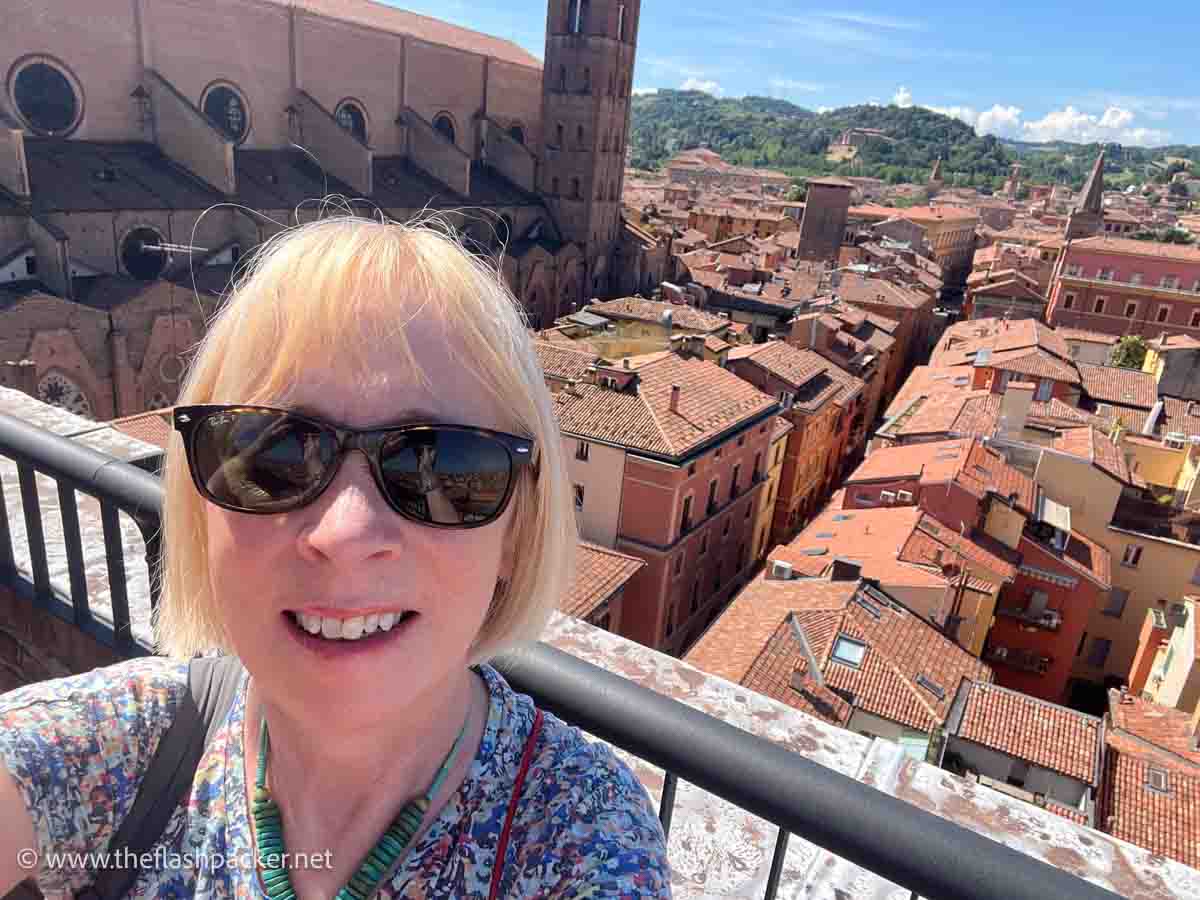
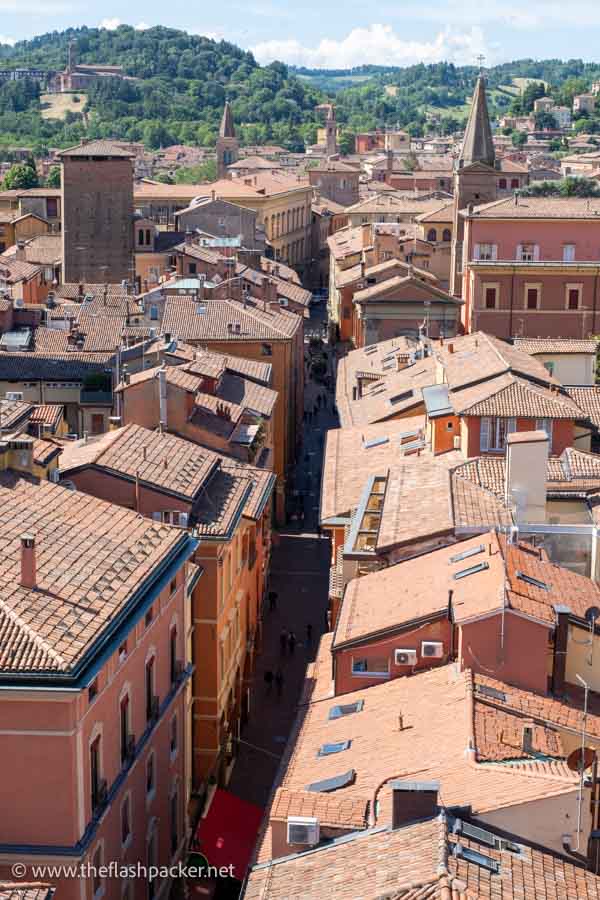
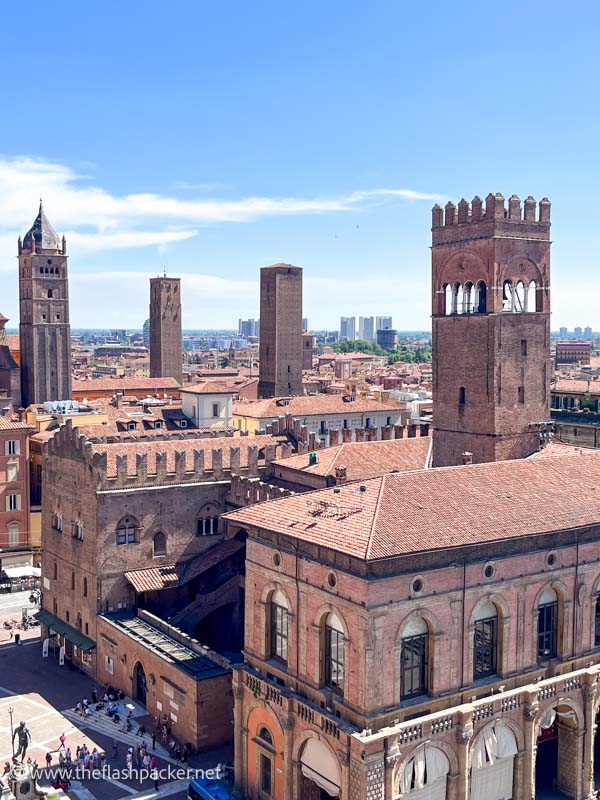
There’s a reason for Basilica di San Petronio’s half-finished façade. If the Bolognese had had their way, their temple to the city’s top patron saint would have been grander than St. Peter’s in Rome. However, Pope Pius IV stamped on their ambitions and ordered them to spend their money on the University’s Archiginnasio.
Piazza Nettuno is Piazza Maggiore’s antechamber and home to the flamboyant Fountain of Neptune by Giambologna, who created some of Florence’s finest sculptures. It marks the spot where Bologna’s Ancient Roman streets, the Cardo and Decumanus, met.
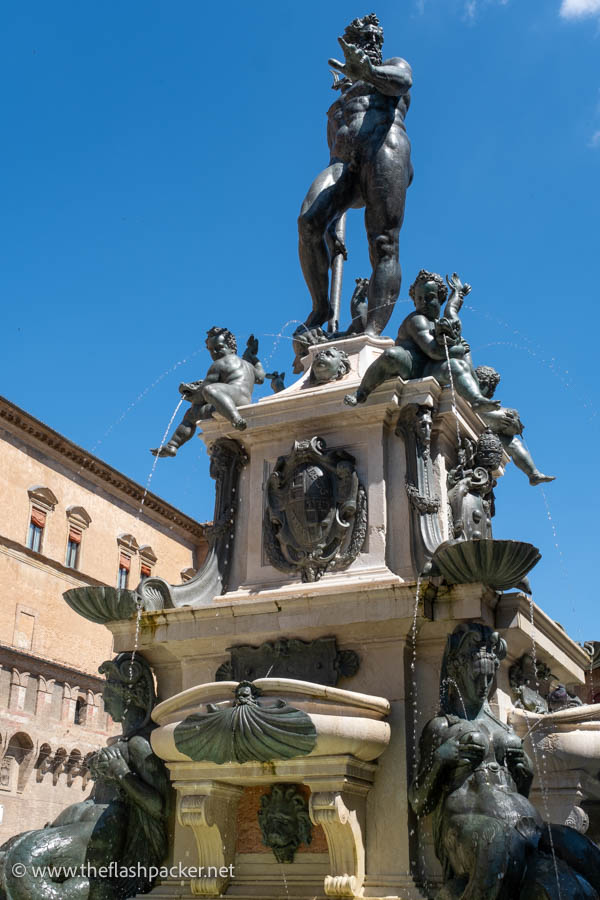
Bologna was a medieval Manhattan, a city of soaring, slender towers. The Due Torri, or Two Towers, are the most famous survivors, named after two families who built them in 1119.
Torre degli Asinelli is Italy’s tallest leaning tour. The shorter of this Laurel and Hardy of medieval architecture is Torre della Garisenda. Due to its precarious structural state, you can no longer climb the Asinelli Tower, but there are tentative plans to reopen it in 2025.
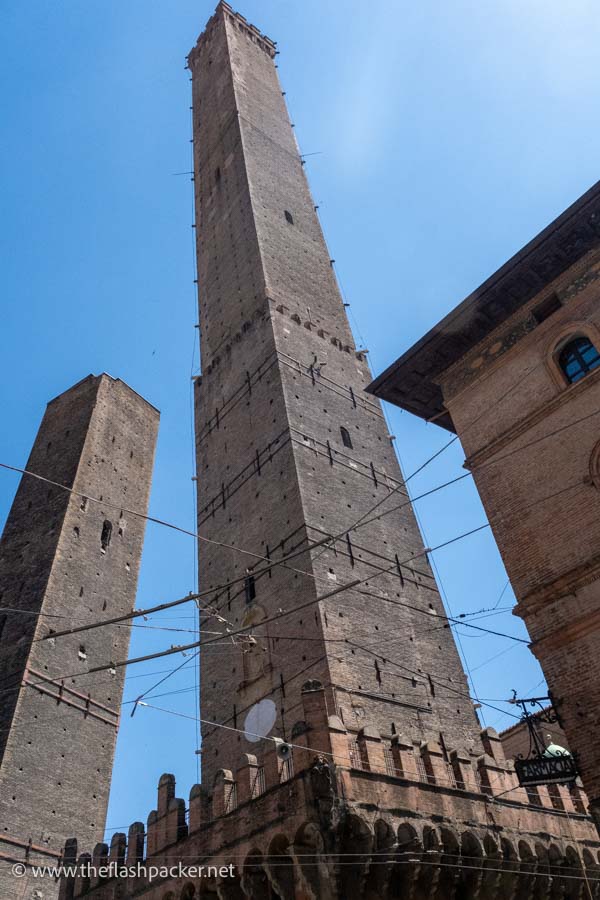
Bologna’s distinctive colour scheme extends to its UNESCO-listed porticoes. Stretching for nearly 40 kilometres, this network of covered walkways makes Bologna a joy to explore on foot, protecting you from the elements while showcasing its architectural beauty.
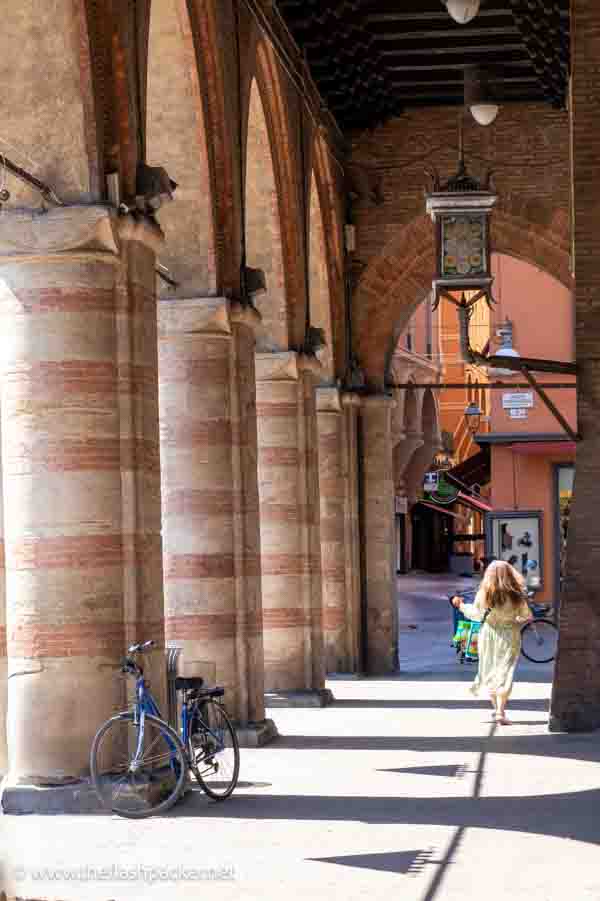
In modern times, Bologna’s nickname is a nod to its famous left-leaning politics. This most liberal of Italian cities is known for its progressive social policies, robust public services and a cultural scene that promotes inclusivity and community engagement.
La Grassa (The Fat)
La Grassa celebrates Bologna’s renowned culinary tradition. It is one of the world’s great gastronomic destinations.
Begin your foodie journey in the Quadrilatero district, a warren of narrow streets where the city’s food trade has boomed since the 1870s. Here you’ll find the best food shops in Bologna, if not the whole of Italy, selling local specialities like tortellini and mortadella.
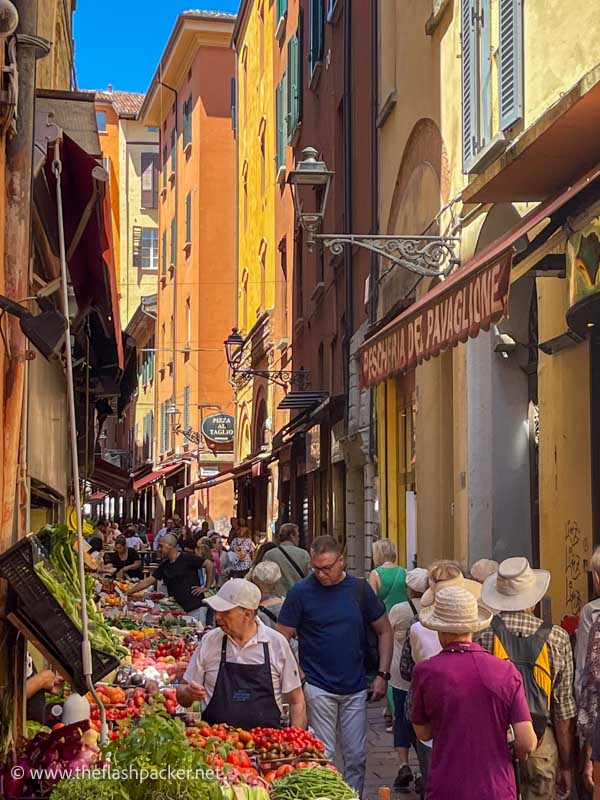
Bologna’s trattorias use recipes that have been passed down through generations. Typical dishes include tortellini in brodo, pasta stuffed with a savoury filling and served in a flavorful broth and tagliatelle al ragù, a fresh egg pasta served with a slow-cooked meat sauce.
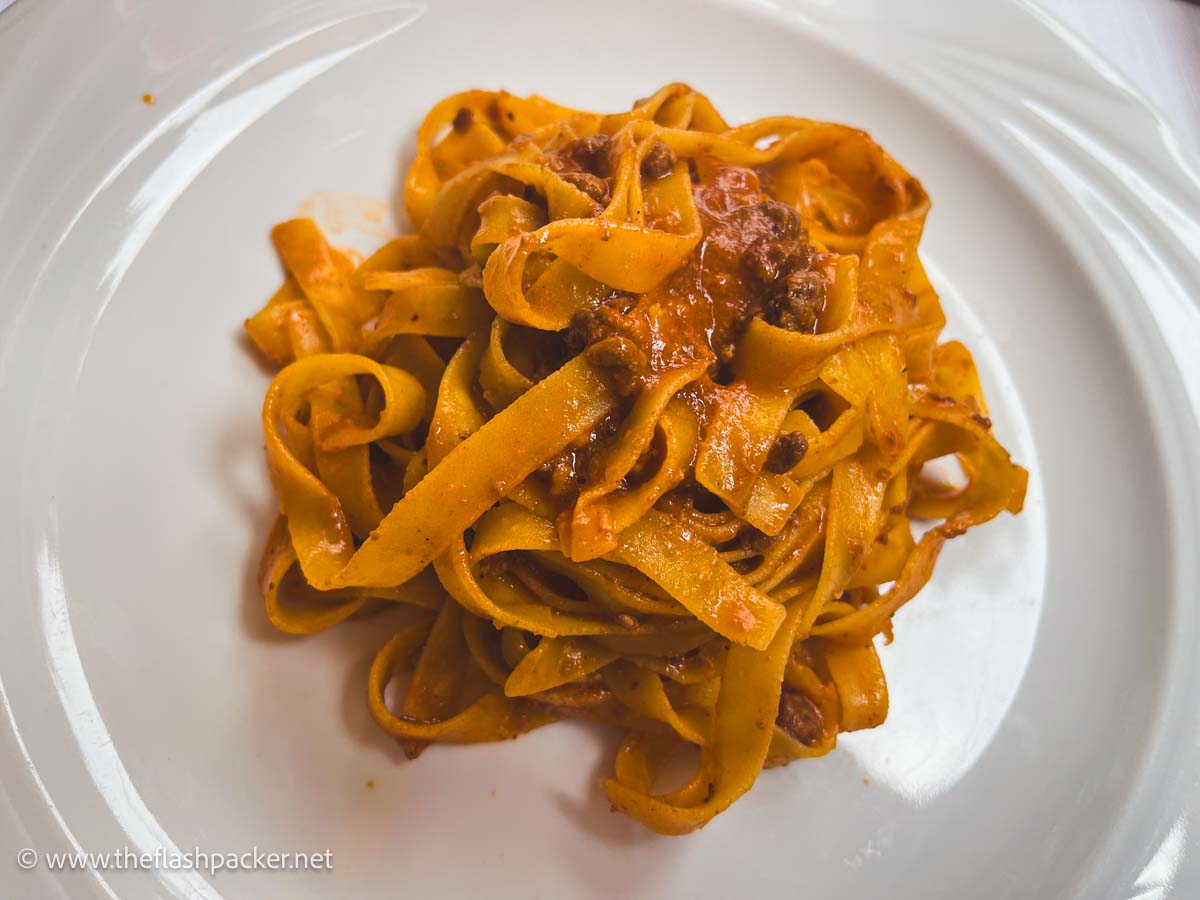
La Dotta (The Learned)
The University of Bologna was founded in 1088, making it the world’s oldest university.
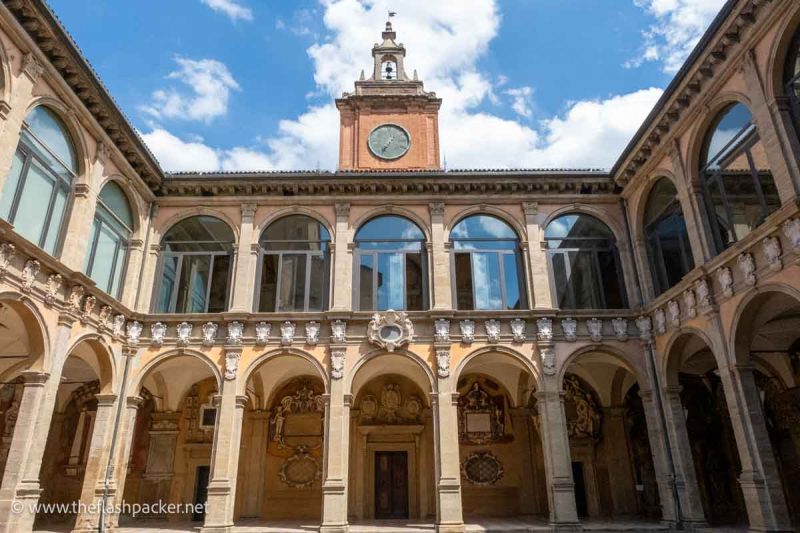
Visit its former home, the Archiginnasio, for a slice of Bologna’s history and to see the old anatomical theatre. This spruce-panelled room was rebuilt after it was destroyed by an Allied bomb in WWII.
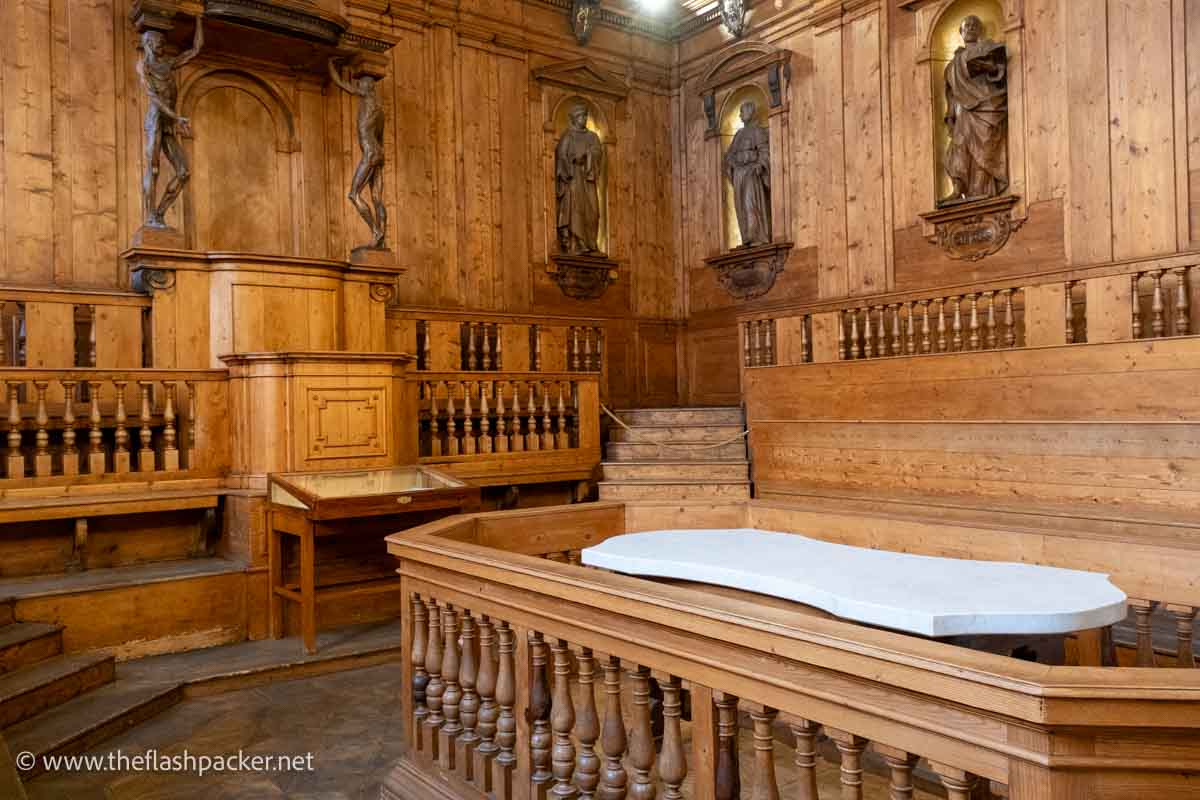
From the Stabat Mater, you where you can see the Archiginnasio’s vast library.
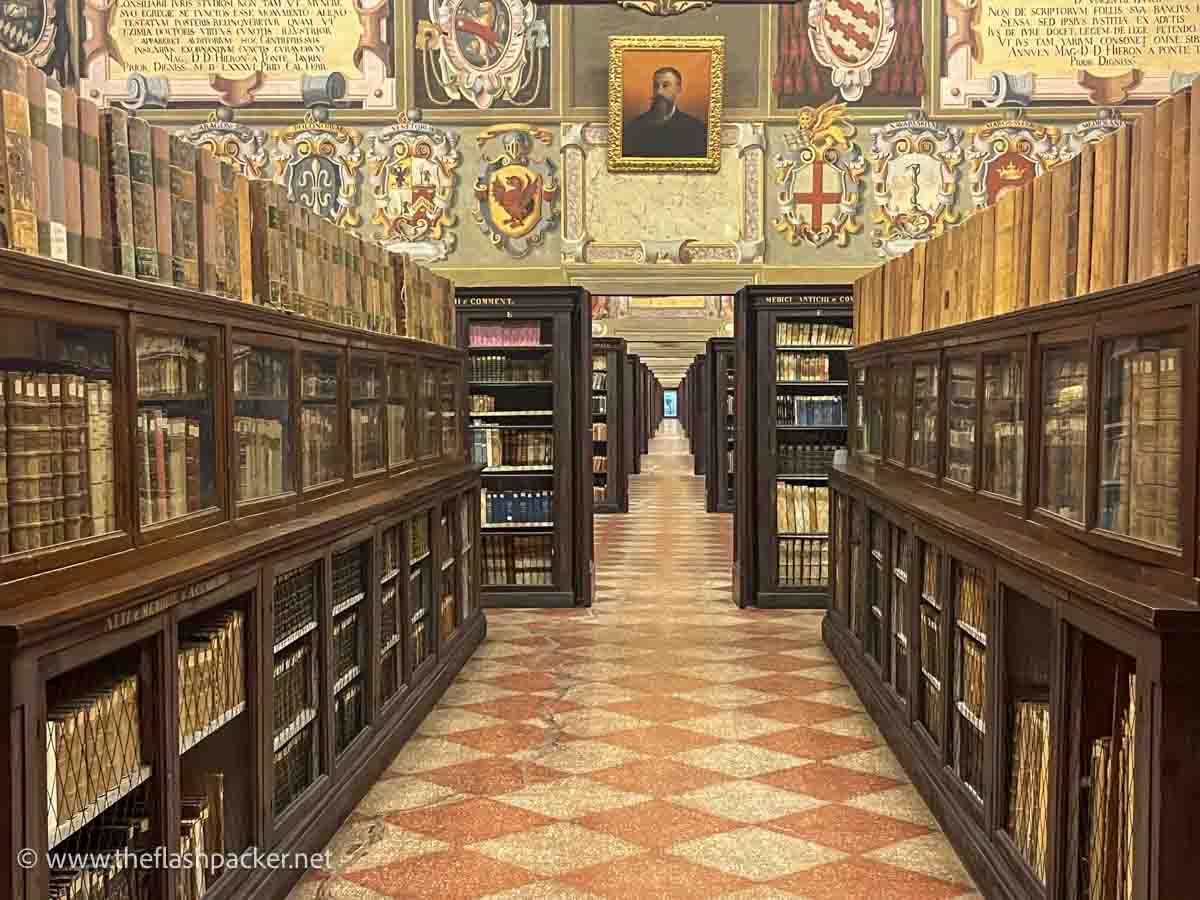
There is a wonderful museum housed in one of Bologna’s grandest palaces in the vibrant university quarter. Museo di Palazzo Poggi is dedicated to the pursuit of knowledge and its absorbing early rooms focus on the work Ulisse Aldrovandi.
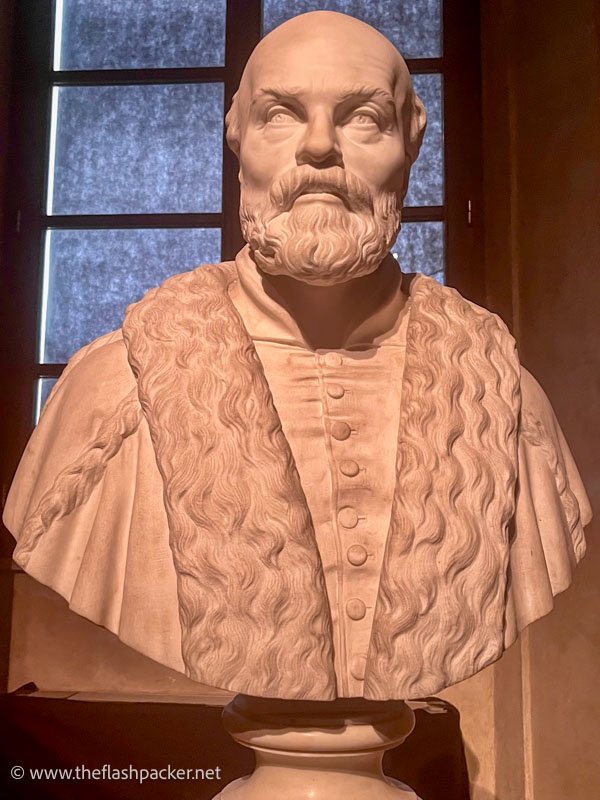
Known as the Father of Natural History, Aldrovandi was a Bologna native noted for his systematic observations of animals, plants and minerals from across the globe. His work represented a Renaissance in scientific thought and methods at the end of the 16th Century, mirroring that in art a hundred years earlier.
Tips for Exploring Bologna’s Historic Centre
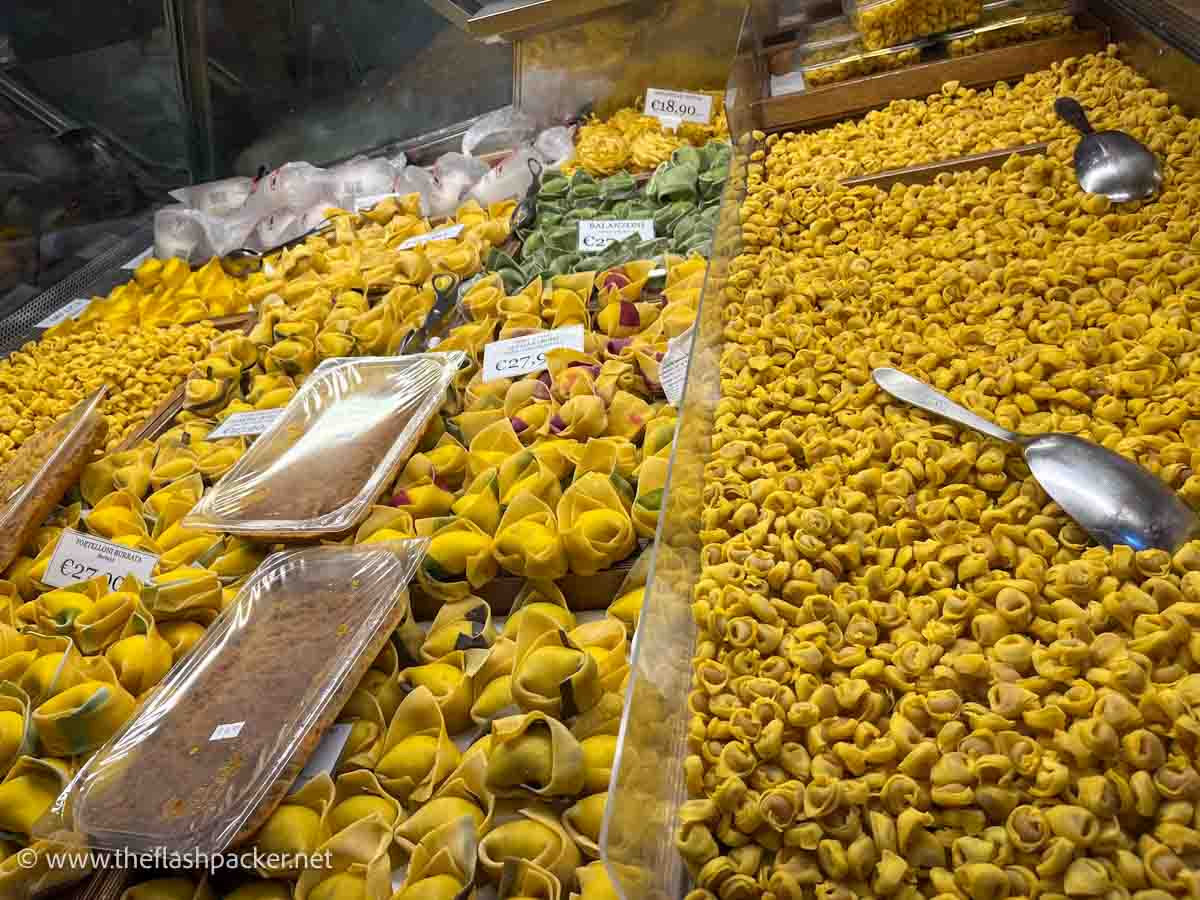
Getting There
As one of Italy’s major railway hubs, Bologna is well served by train with high-speed services to Florence, Venice, Milan, Rome and beyond. Regional trains reach places like Ravenna, Ferrara, Modena and Parma.
Its station, Bologna Centrale, is 20 minutes on foot walk from Piazza Maggiore.
Guglielmo Marconi Airport which serves many national and international airlines. It is around four miles from the city centre and connected to Bologna Centrale station by the frequent Marconi Express.
Where I Stayed in Bologna
I enjoyed my stay at Casa Klara, a quiet and comfortable apartment with a jasmine-filled terrace.
Location-wise, it was perfect. Piazza Nettuno was a ten-minute walk in one direction; Bologna Centrale was 20 minutes away in the other direction.
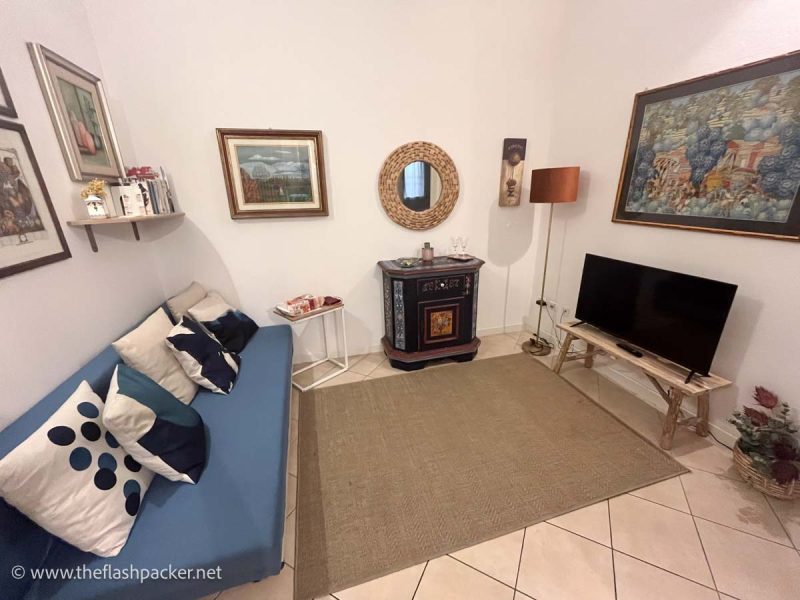
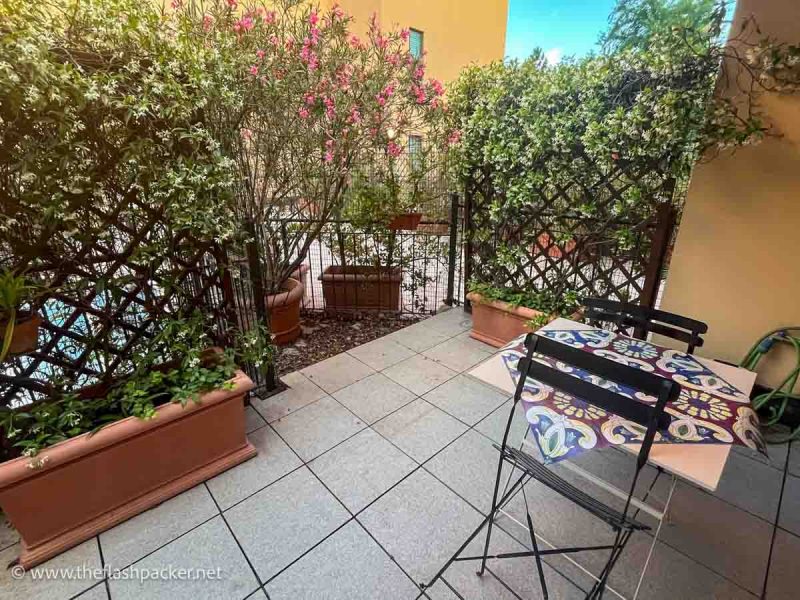
I also stayed one night at Savhotel before my return flight to London.
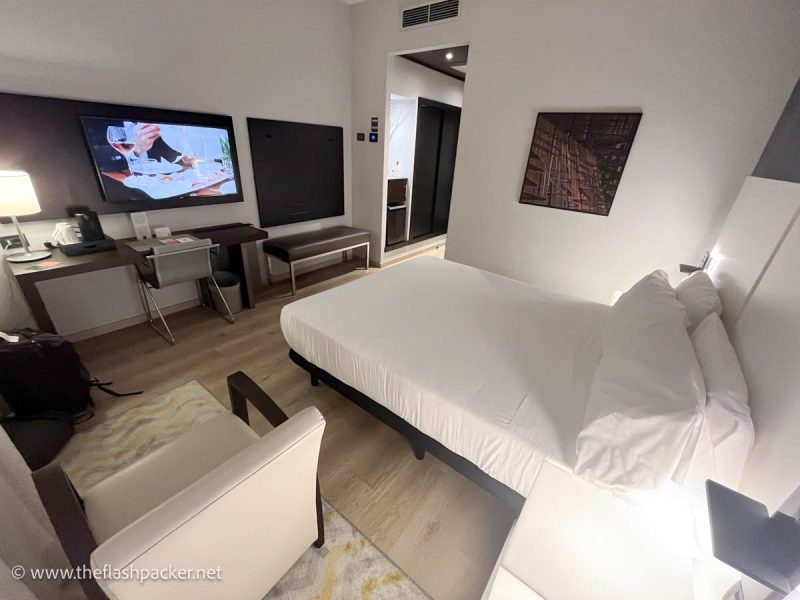
The rooms are modern and comfortable, the staff were exceptional and it was considerably cheaper than hotels closer to the city centre. It is further from the historic centre but frequent and cheap buses will take you there in 15 minutes.
And that’s a wrap
I hope this article helps you explore the historic centre of Bologna and you have a fabulous time there.
It is a rewarding city-break destination, in no small part thanks to the absence of the crowds that descend on the tourist honeypots of Florence or Venice. It feels more real, not somewhere that exists mostly for the gratification of visitors.
Happy travels!

About Bridget
Bridget Coleman has been a passionate traveller for more than 30 years. She has visited 70+ countries, most as a solo traveller.
Articles on this site reflect her first-hand experiences.
To get in touch, email her at hello@theflashpacker.net or follow her on social media.

